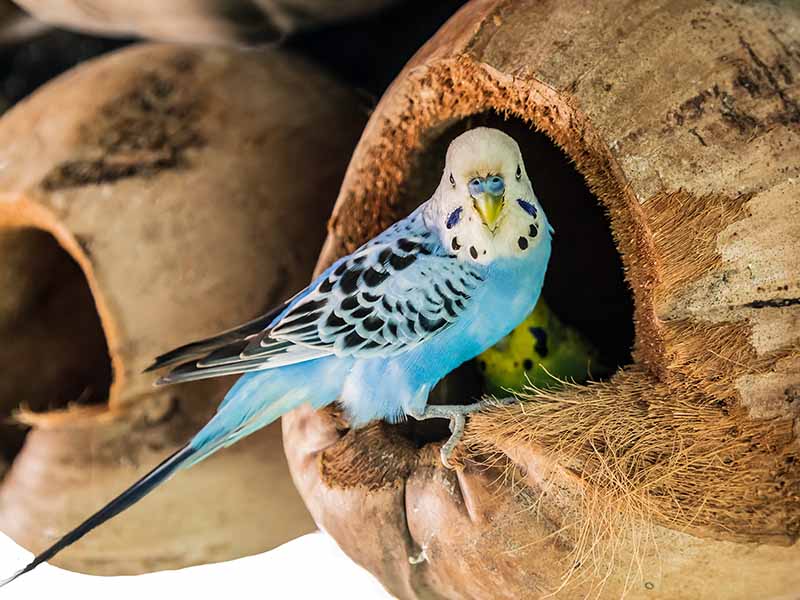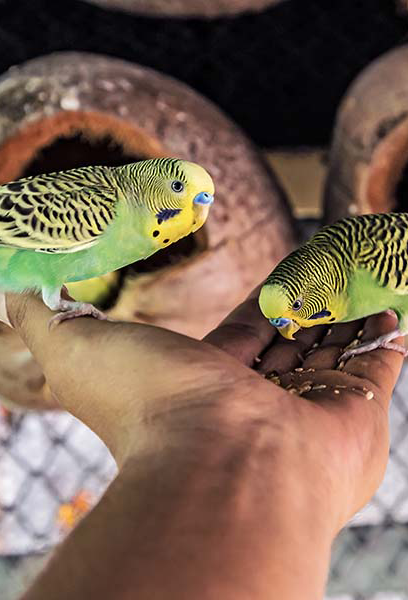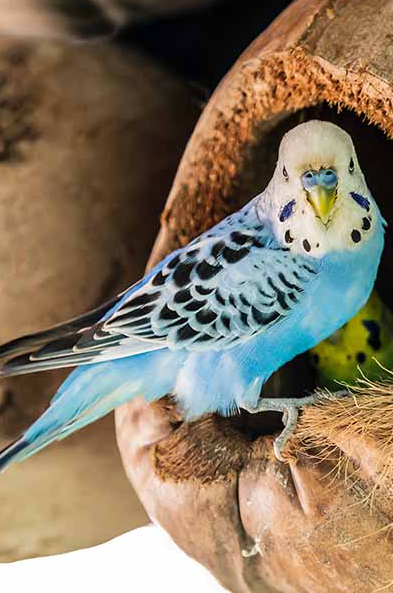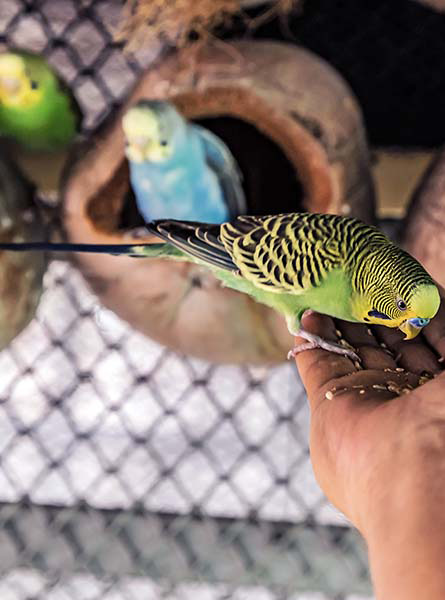Parakeets
Introduction
Parakeets, also known as budgerigars, are small, colorful birds native to Australia. They belong to the parrot family and are popular as pets worldwide due to their vibrant plumage, sociable nature, and ability to mimic human speech. This report explores various aspects of parakeets, including their care, behavior, habitat, and more.
Brief overview of parakeets as popular pet birds.
Parakeets, also known as budgerigars, have earned their place as one of the most popular pet birds globally. Renowned for their charming personalities and striking plumage, parakeets have captured the hearts of bird enthusiasts and families alike. Originating from the dry regions and grasslands of Australia, these small parrots have adapted well to domestic life, making them ideal companions for both beginners and experienced bird owners.
One of the key attractions of parakeets as pets is their colorful variety. They come in shades of green, yellow, blue, and white, often with intricate patterns that add to their visual appeal. Beyond their aesthetics, parakeets are also celebrated for their social nature. They thrive in pairs or small groups, displaying affectionate behaviors such as preening each other and vocalizing to communicate. Additionally, their ability to mimic human speech and sounds further enhances their appeal, making them engaging and interactive pets in households worldwide.
Importance of understanding their care needs and behavior.
Understanding the care needs and behavior of parakeets is crucial for ensuring their health, happiness, and overall well-being as pets. Proper care begins with providing a suitable environment that meets their physical and psychological requirements. This includes choosing an appropriately sized cage with the right bar spacing, providing a variety of perches for foot health, and offering stimulating toys to prevent boredom. Additionally, a balanced diet rich in nutrients from seeds, fresh vegetables, and occasional treats is essential to maintain their optimal health.
Behaviorally, parakeets are social creatures that thrive on interaction and mental stimulation. Owners should be aware of their natural behaviors such as vocalization, preening, and playful activities. Understanding their social needs helps prevent loneliness and encourages positive bonding with both their human caregivers and other parakeet companions if housed in pairs or small groups. Furthermore, recognizing signs of illness or distress is vital for prompt veterinary care, ensuring early intervention and treatment if necessary. Overall, a comprehensive understanding of parakeet care and behavior fosters a fulfilling and enriching relationship between owners and their feathered companions.
Physical Characteristics
Size, weight, and general appearance.
Parakeets, also known as budgerigars or budgies, are small to medium-sized parrots known for their compact and slender build. On average, they measure between 7 to 9 inches (18 to 23 centimeters) in length from head to tail. Their weight typically ranges from 30 to 40 grams (1 to 1.4 ounces), making them lightweight and agile flyers.
In terms of general appearance, parakeets exhibit a distinctive silhouette characterized by a streamlined body with a slightly tapered tail. They have a rounded head adorned with small, expressive eyes and a robust beak designed for cracking seeds and manipulating objects. Parakeets are renowned for their vibrant plumage, which can feature a wide array of colors and patterns. Common colors include shades of green, yellow, blue, and white, often with markings or variegations that add to their visual appeal.
Overall, parakeets’ size, weight, and appearance contribute to their charm as pets, appealing to both experienced avian enthusiasts and newcomers to bird ownership alike. Understanding their physical characteristics helps in providing appropriate care and creating a conducive environment for these engaging and colorful companions.
Variety of colors and patterns in their plumage.
Parakeets are celebrated for their stunning variety of colors and patterns, which contribute significantly to their popularity as pets. In their natural habitat, wild parakeets primarily display a bright green plumage with yellow and black markings, which helps them blend into their surroundings and avoid predators. However, through selective breeding, domestic parakeets have been developed in a dazzling array of colors and patterns, offering pet owners an extensive choice of visually appealing birds.
These color variations include shades of blue, yellow, white, and grey, often combined in unique patterns. For example, blue parakeets can range from a pale sky blue to a deep cobalt, while yellow parakeets can vary from a soft pastel yellow to a vibrant, canary-like hue. Some parakeets have pied patterns, characterized by irregular patches of color, while others exhibit more uniform markings. Additionally, mutations such as the “opaline” can result in distinct color changes and pattern shifts, where the usual markings are altered or enhanced.
The diversity in plumage not only adds to the aesthetic appeal of parakeets but also makes each bird uniquely identifiable, allowing owners to choose a pet that matches their personal preferences. This variety in coloration and patterning reflects the incredible genetic potential of parakeets and underscores the fascinating possibilities within avian genetics. Whether a parakeet is a vivid green reminiscent of its wild ancestors or a unique combination of colors achieved through breeding, their vibrant plumage is a significant aspect of their charm and allure.
Natural Habitat and Adaptability
Origins in Australia and natural habitats.
Parakeets, specifically budgerigars (Melopsittacus undulatus), trace their origins to the arid and semi-arid regions of Australia. In their natural habitat, these small parrots are commonly found across vast expanses of open grasslands, scrublands, and wooded areas, where they have adapted to survive in environments with limited water and vegetation. They are adept at foraging for seeds, grasses, and occasional insects, utilizing their sharp beaks to crack open seed husks and access nutritious kernels.
The natural habitat of parakeets in Australia provides them with ample opportunities for social interaction and breeding. They often gather in large flocks, flying swiftly and agilely across the landscape in search of food and water sources. Their ability to thrive in such varied and sometimes harsh conditions underscores their resilience and adaptability as a species. This natural environment also influences their behaviors and instincts, such as their social structure, vocalizations, and nesting habits, which remain deeply rooted in their evolutionary history as nomadic birds of the Australian outback.
Understanding the origins and natural habitats of parakeets is essential for providing appropriate care and enrichment in captivity. It offers insights into their dietary preferences, social needs, and environmental requirements, enabling pet owners to create environments that mimic natural conditions and promote the overall health and well-being of these fascinating avian companions.
Successful adaptation to various environments globally.
Parakeets, originally native to the arid regions of Australia, have successfully adapted to diverse environments around the world, making them one of the most widespread and adaptable pet bird species. Introduced to different continents through human trade and colonization, parakeets have established thriving populations in regions ranging from temperate climates to tropical zones. This adaptability is partly due to their generalist diet, which includes seeds, fruits, and vegetation, allowing them to find sustenance in a variety of ecosystems.
In captivity, parakeets continue to demonstrate resilience and adaptability. They readily acclimate to different cage setups and household environments, provided their basic needs for space, food, and social interaction are met. This adaptability has contributed to their popularity as pets, as they are relatively easy to care for and can thrive in diverse living conditions with proper care and attention. However, despite their adaptability, it remains important for owners to be aware of their specific environmental and nutritional requirements to ensure their health and well-being in captivity.
Overall, the successful global adaptation of parakeets highlights their robust nature and ability to thrive in various climates and habitats. This adaptability underscores their versatility as companion animals and reinforces their reputation as engaging and adaptable pets suitable for a wide range of households and lifestyles.
Behavioral Traits
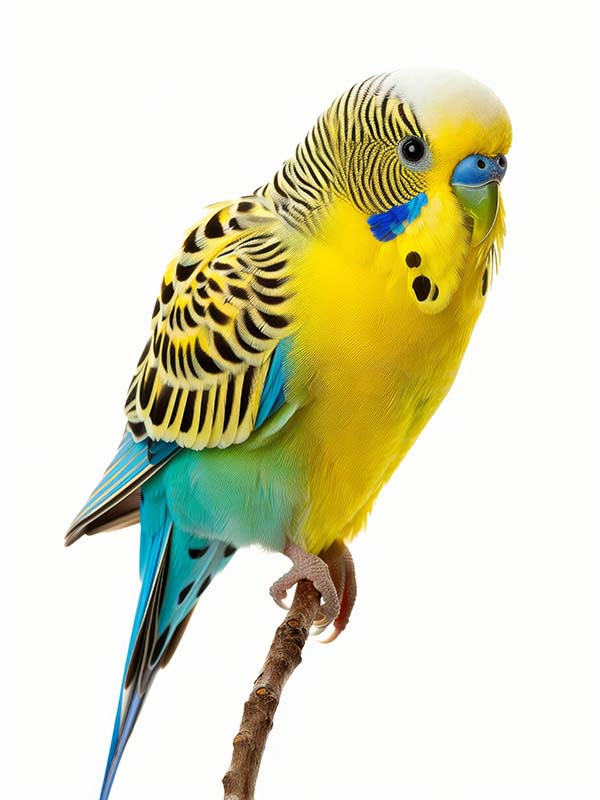
Social behavior: Interaction with other parakeets and humans.
Parakeets are renowned for their social behavior, both among their own kind and with humans. In their natural habitat, parakeets form flocks that can consist of hundreds to thousands of individuals. Within these flocks, they engage in activities such as grooming, playing, and communicating through vocalizations. This social structure serves not only for companionship but also for safety, as they work together to find food and protect against predators.
When kept as pets, parakeets display similar social tendencies. They bond closely with their human caregivers and can form strong attachments through daily interaction and positive reinforcement. Parakeets enjoy being spoken to and often mimic household sounds and speech patterns, demonstrating their intelligence and adaptability in understanding and responding to human communication cues.
For optimal social development, parakeets are ideally kept in pairs or small groups, as they thrive on companionship and stimulation from their own kind. Interaction with humans should be gentle and consistent, fostering trust and encouraging positive behaviors such as stepping onto a finger or participating in simple training exercises. Understanding and nurturing their social instincts enhances their well-being and enriches the bond between parakeets and their owners.
Vocal abilities: Mimicry of sounds and speech.
Parakeets are renowned for their impressive vocal abilities, which include mimicry of both natural and human-made sounds. In their natural habitat and as pets, parakeets utilize vocalizations for various purposes such as communication, social interaction, and territory marking. They have a diverse repertoire of chirps, whistles, and squawks that serve to communicate with flock members and signal potential threats or opportunities.
One of the most captivating aspects of parakeets’ vocal abilities is their capacity to mimic human speech and sounds. With patience and consistent training, many parakeets can learn to imitate words, phrases, and even melodies. This ability is facilitated by their keen auditory senses and remarkable ability to reproduce sounds with surprising accuracy. Parakeets often mimic sounds they hear frequently in their environment, such as doorbells, phone ringtones, or the voices of their human caregivers.
For pet owners, engaging with a parakeet’s vocal abilities can be both entertaining and rewarding. It provides an opportunity to bond with the bird through interactive communication and reinforces their cognitive abilities. However, it’s important to note that not all parakeets will mimic speech, as individual temperament and environmental factors can influence their vocal development. Nonetheless, fostering a stimulating and enriching environment can encourage vocal expression and enhance the overall quality of life for these charismatic avian companions.
Playfulness and intelligence: Engaging in toys and learning tricks.
Parakeets are known for their playful nature and surprising intelligence, traits that contribute significantly to their appeal as pets. These birds exhibit a natural curiosity and enjoy exploring their surroundings, often engaging enthusiastically with a variety of toys and enrichment activities. Common toys for parakeets include swings, bells, ladders, and puzzle feeders, which stimulate both physical activity and mental agility.
In addition to their playfulness, parakeets demonstrate intelligence through their ability to learn tricks and solve simple puzzles. With patient and consistent training, they can be taught to step onto a finger, fly short distances on command, or even retrieve small objects. This responsiveness to training reflects their cognitive capabilities and adaptability to learning new behaviors.
Providing ample opportunities for mental stimulation and physical exercise is essential for promoting the well-being of pet parakeets. Regular interaction with toys and engaging in training sessions not only enriches their environment but also strengthens the bond between parakeets and their owners. Understanding and encouraging their innate playfulness and intelligence fosters a fulfilling and interactive relationship, making parakeets cherished companions in households worldwide.
Caring for Parakeets
Housing requirements: Cage size, perches, and accessories.
When considering housing requirements for parakeets, it’s essential to provide a comfortable and stimulating environment that meets their physical and behavioral needs. The primary component of parakeet housing is the cage, which should be spacious enough to accommodate their natural behaviors such as flying and perching. A suitable cage size for a pair of parakeets is typically a minimum of 18 inches in length, width, and height, with bar spacing around 1/2 inch to prevent escape and injury.
Inside the cage, providing a variety of perches is crucial for foot health and exercise. Parakeets enjoy perches of different thicknesses and textures, such as natural wood, rope, or clean plastic. Multiple perches at varying heights encourage climbing and jumping, mimicking their natural habitat where they navigate different levels of vegetation.
Accessories play a significant role in enriching the parakeet’s environment. Toys such as swings, bells, mirrors, and puzzle feeders provide mental stimulation and prevent boredom. Rotating toys regularly and introducing new ones periodically keeps parakeets engaged and prevents them from becoming overly attached to a particular item. Additionally, providing food and water dishes that are easily accessible and cleaned daily ensures hygiene and freshness, promoting the overall health and well-being of pet parakeets in their home environment.
Diet and nutrition: Seed mixes, fresh foods, and treats.
Proper diet and nutrition are vital for the health and longevity of pet parakeets. A balanced diet for parakeets consists of a variety of foods that cater to their specific nutritional needs. The foundation of their diet typically includes a high-quality seed mix formulated specifically for parakeets. This mix should be fresh, free from dust or debris, and contain a variety of seeds such as millet, canary grass seed, and sunflower seeds. However, it’s important to note that seeds alone are not sufficient to meet all of their dietary requirements.
In addition to seeds, fresh foods should be offered daily to provide essential vitamins, minerals, and fiber. This can include a variety of leafy greens such as spinach, kale, and lettuce, as well as vegetables like carrots, broccoli, and bell peppers. Fruits such as apples, berries, and melons can also be offered in moderation as treats due to their higher sugar content. It’s essential to wash all fresh foods thoroughly and offer them in small, bite-sized pieces to prevent choking and ensure easy consumption.
As with any diet, moderation is key when offering treats to parakeets. Treats like millet sprays or small amounts of nuts can be given occasionally as rewards or for training purposes, but they should not exceed more than 10% of their total diet. Providing a balanced and varied diet ensures that parakeets receive all the necessary nutrients to support their overall health, immune function, and vitality throughout their lives. Regular monitoring of their food intake and consulting with an avian veterinarian can help ensure that their dietary needs are being met adequately.
Health care: Regular check-ups, signs of illness, and hygiene practices.
Maintaining the health of pet parakeets requires attention to regular check-ups, vigilant observation of signs of illness, and meticulous hygiene practices. Regular veterinary check-ups are essential to monitor the overall health and well-being of parakeets. Avian veterinarians can conduct thorough examinations, check for any signs of disease or abnormalities, and provide recommendations for diet, housing, and enrichment based on the bird’s specific needs.
Owners should familiarize themselves with common signs of illness in parakeets, which may include changes in appetite, behavior, or appearance. Symptoms such as lethargy, fluffed feathers, sneezing, discharge from the eyes or nostrils, or changes in droppings can indicate underlying health issues that require prompt attention. Early detection and intervention are crucial for successful treatment of illnesses in parakeets.
Maintaining a clean and hygienic environment is also essential for preventing disease and promoting overall health. This includes regularly cleaning and disinfecting the cage, perches, food and water dishes, and toys. Fresh water should be provided daily, and uneaten fresh foods should be removed promptly to prevent contamination. By adopting proactive health care practices and promptly addressing any concerns with veterinary guidance, owners can ensure a healthy and thriving life for their pet parakeets.
Breeding and Reproduction
Nesting behaviors and conditions for breeding.
Nesting behaviors and conditions for breeding are important aspects to consider for parakeet owners interested in breeding their birds. Parakeets typically show breeding behaviors when they reach sexual maturity, which is around 6 to 12 months of age depending on the individual bird. Male parakeets may become more vocal and display courtship behaviors, such as bobbing their heads and regurgitating food to the female. Females may exhibit nesting behaviors by exploring potential nesting sites and preparing nesting materials.
For successful breeding, it’s essential to provide a suitable nesting environment within the cage. This includes offering a nesting box or enclosed area with dimensions of approximately 6 inches by 6 inches by 8 inches, with an entrance hole large enough for the parakeets to enter comfortably but small enough to deter predators. Inside the nesting box, provide clean, dry nesting materials such as shredded paper or untreated wood shavings to encourage the female to build a nest. It’s crucial to monitor the breeding pair closely during this process and ensure they have a balanced diet rich in calcium and other essential nutrients to support egg laying and chick development.
Breeding parakeets should be approached with careful consideration and preparation. Owners should be prepared to provide adequate care for the chicks once they hatch, including maintaining a quiet environment and providing nutritious food for both parents and offspring. Consulting with an avian veterinarian or experienced breeder can provide valuable guidance on breeding practices and ensure the health and well-being of both the breeding pair and their offspring.
Incubation period and parental care of chicks.
The incubation period and parental care of chicks are critical phases in the breeding process of parakeets. After the female parakeet lays her eggs, typically one every other day until she completes her clutch of eggs, she and the male take turns incubating the eggs. The incubation period for parakeet eggs lasts approximately 18 to 21 days, during which the parents maintain a consistent temperature and humidity level within the nesting box to ensure proper development of the embryos.
Once the eggs hatch, both parents play active roles in caring for the chicks. They feed them regurgitated food, which is initially a partially digested mixture that provides essential nutrients for the growing chicks. Parental care involves maintaining warmth, cleanliness, and protection for the chicks, as well as teaching them behaviors such as feeding and preening. The chicks grow rapidly during the first few weeks of life, gradually developing feathers and becoming more independent as they prepare to fledge from the nest.
Owners should provide a supportive environment for the breeding pair during this period, ensuring they have access to nutritious food and clean water. Monitoring the chicks’ development and interactions with their parents can provide valuable insights into their health and well-being. Additionally, maintaining a quiet and stress-free environment around the nesting area can help promote successful parental care and the healthy development of the chicks into fledglings ready to explore their surroundings.
Common Issues and Solutions
Behavioral problems: Biting, feather plucking, and noise levels.
Behavioral problems such as biting, feather plucking, and excessive noise can arise in parakeets for various reasons, and addressing these issues requires understanding their underlying causes and implementing appropriate interventions. Biting is a common behavior in parakeets, often as a response to fear, stress, or territoriality. It’s essential for owners to approach their birds calmly and respectfully, gradually building trust through positive reinforcement and consistent interaction. Avoiding sudden movements and respecting their personal space can help mitigate biting tendencies over time.
Feather plucking, where parakeets excessively groom or pull out their feathers, can indicate underlying health issues, stress, or boredom. Identifying and addressing the root cause, such as providing mental stimulation through toys, varying their environment, or addressing any potential health concerns with a veterinarian, is crucial to reducing this behavior. Ensuring a balanced diet and maintaining a consistent daily routine can also contribute to minimizing feather plucking behaviors.
Noise levels in parakeets can vary based on their natural vocalizations and environmental factors. While vocalizations are a normal part of parakeet behavior, excessive noise can be disruptive in a household setting. Providing adequate mental and physical stimulation, ensuring a consistent daily routine, and minimizing stressors in their environment can help manage noise levels. Training and positive reinforcement techniques can also be used to encourage quieter behavior. Overall, addressing behavioral problems in parakeets requires patience, understanding, and proactive care to ensure a harmonious and enriching relationship between owners and their feathered companions.
Health concerns: Diseases, injuries, and preventive care.
Maintaining the health of parakeets involves awareness of common diseases, potential injuries, and preventive care measures. Like all pets, parakeets are susceptible to various health concerns that can impact their well-being. Common diseases include respiratory infections, gastrointestinal issues, and parasites such as mites and worms. Symptoms of illness in parakeets may include changes in appetite, behavior, or appearance, and it’s crucial for owners to seek veterinary care promptly if any signs of illness are observed.
Injuries can occur from accidents within the cage, such as falls or collisions with objects, or during interactions with other pets or household hazards. Providing a safe and secure environment with appropriate cage accessories and minimizing potential hazards can help prevent injuries. Regular monitoring of the parakeet’s health, including checking for any wounds or abnormalities, is essential for early detection and treatment.
Preventive care for parakeets includes maintaining a clean and hygienic environment, providing a balanced diet, and ensuring regular veterinary check-ups. Routine examinations by an avian veterinarian can help identify and address health issues before they escalate. Additionally, adhering to recommended vaccination schedules and practicing good hygiene practices, such as cleaning the cage and food dishes regularly, can help minimize the risk of disease transmission and promote the overall health and longevity of pet parakeets.
Troubleshooting tips for parakeet owners.
Troubleshooting common issues that parakeet owners may encounter involves identifying the underlying causes and implementing effective solutions to promote the well-being of these beloved pets. One frequent concern is diet-related issues, such as selective eating habits or obesity. Owners can address these by offering a balanced diet of seeds, fresh fruits, vegetables, and occasional treats in moderation. Gradually introducing new foods and rotating options can encourage dietary variety and ensure nutritional balance.
Another common issue is environmental stressors, which can manifest in behaviors like excessive vocalization, aggression, or feather plucking. To alleviate stress, ensure the parakeet’s cage is placed in a quiet area away from drafts, direct sunlight, and loud noises. Providing enriching toys, perches of different textures and sizes, and regular out-of-cage exercise can also help alleviate boredom and reduce behavioral problems.
Additionally, maintaining a consistent daily routine for feeding, handling, and social interaction can promote a sense of security and predictability for parakeets. Observing their behavior closely and responding promptly to any changes or concerns can prevent issues from escalating. Consulting with an avian veterinarian or experienced bird behaviorist can provide further insights and tailored recommendations for troubleshooting specific challenges that arise with pet parakeets.
Frequently Asked Questions
What should I feed my parakeet?
Parakeets should primarily be fed a balanced diet of commercial seed mixes supplemented with fresh vegetables, fruits, and occasional treats like millet spray. Ensure access to clean, fresh water daily.
How often should I clean my parakeet's cage?
It’s recommended to clean your parakeet’s cage thoroughly at least once a week. Change the cage liner daily and remove any leftover food to maintain hygiene and prevent health issues.
Do parakeets need companionship?
Parakeets are social birds and thrive with companionship. It’s ideal to keep them in pairs or small groups for mental stimulation and to prevent loneliness.
How can I tame my parakeet?
Taming a parakeet requires patience and consistent effort. Start by spending time near the cage, offering treats, and gradually introducing your hand for them to step onto. Positive reinforcement and gentle handling are key.
What toys are best for parakeets?
Parakeets enjoy toys that encourage physical activity and mental stimulation, such as swings, bells, ladders, and puzzle feeders. Rotate toys regularly to keep them engaged.
How can I tell if my parakeet is sick?
Signs of illness in parakeets include changes in appetite, lethargy, fluffed feathers, discharge from the eyes or nose, and unusual droppings. Consult a veterinarian if you notice any of these symptoms.
Can parakeets learn to talk?
Yes, parakeets are capable of learning to mimic human speech and sounds. With patient training and repetition, some parakeets can develop a vocabulary of words and phrases.
How long do parakeets live?
On average, parakeets can live between 7 to 15 years with proper care. Some may even live longer depending on genetics and health maintenance.
What temperature is best for parakeets?
Parakeets are comfortable in temperatures ranging from 65°F to 85°F (18°C to 29°C). Avoid placing their cage in drafty or excessively hot areas to prevent stress.
Do parakeets need regular veterinary care?
Yes, regular check-ups with an avian veterinarian are recommended to ensure your parakeet’s health. Vaccinations, parasite prevention, and health assessments can help detect and prevent potential issues.
Conclusion
Recap of key points about parakeet care and behavior.
Recapping key points about parakeet care and behavior underscores the importance of providing a nurturing and enriching environment for these intelligent and social birds. First and foremost, understanding their dietary needs is crucial, with a balanced diet consisting of seeds, fresh fruits, vegetables, and occasional treats. Maintaining a clean and spacious cage equipped with varied perches and stimulating toys promotes physical activity and mental engagement, essential for their well-being.
Social interaction is another fundamental aspect of parakeet care, as they thrive on companionship with both humans and other parakeets. Building trust through gentle handling and positive reinforcement fosters a strong bond between owners and their feathered companions. Additionally, being attuned to their vocalizations and body language helps identify potential health issues or behavioral concerns early on, allowing for timely intervention and veterinary care if needed.
By prioritizing these aspects of care—nutrition, environment, socialization, and attentive observation—parakeet owners can ensure a fulfilling and healthy life for their pets. Providing a supportive and enriching environment not only enhances the quality of life for parakeets but also deepens the bond between owners and their feathered friends, making them cherished members of the household.
Importance of responsible pet ownership and enriching the lives of pet parakeets.
Responsible pet ownership plays a crucial role in enriching the lives of pet parakeets and ensuring their well-being throughout their lifespan. This responsibility begins with providing a suitable and stimulating environment that meets their physical, social, and cognitive needs. By understanding and fulfilling their dietary requirements with a balanced and varied diet, owners can promote good health and vitality in their parakeets.
Beyond basic care, responsible ownership involves regular interaction and mental stimulation to prevent boredom and encourage natural behaviors like flying, foraging, and vocalizing. Providing a safe and enriching living space with appropriate cage accessories and toys enhances the parakeet’s quality of life and supports their overall happiness.
Additionally, responsible pet owners prioritize veterinary care, ensuring routine check-ups and prompt attention to any signs of illness or injury. This proactive approach helps maintain the parakeet’s health and allows for early detection and treatment of potential health issues. By committing to responsible pet ownership, owners not only enrich the lives of their parakeets but also cultivate a rewarding and enduring bond based on mutual trust, respect, and companionship.
